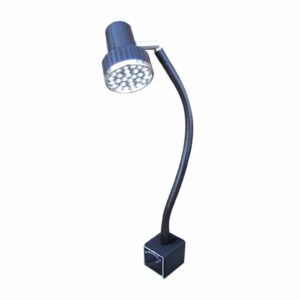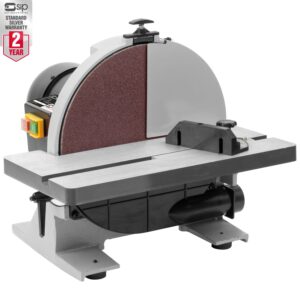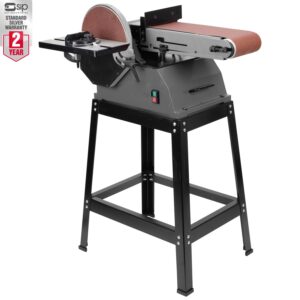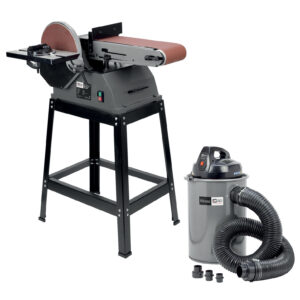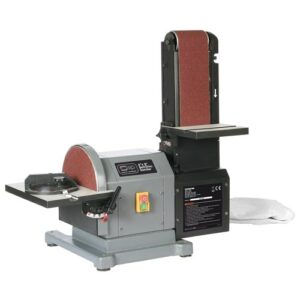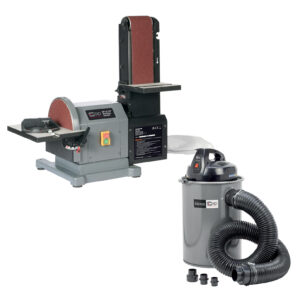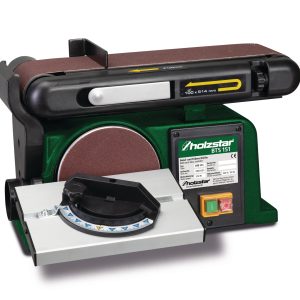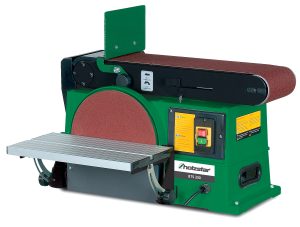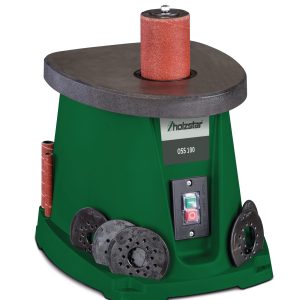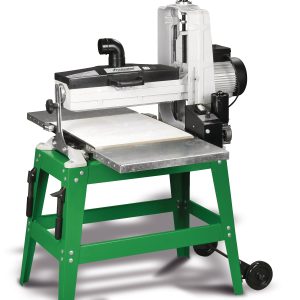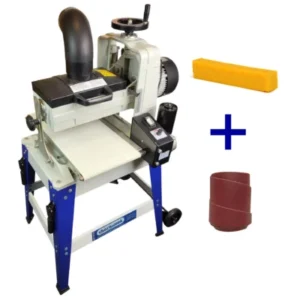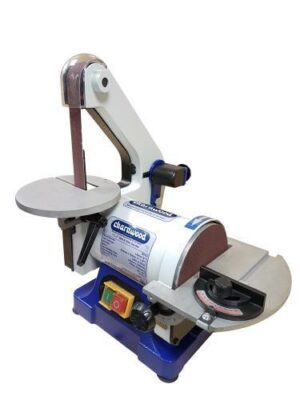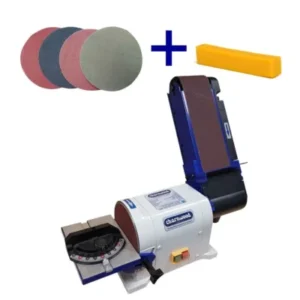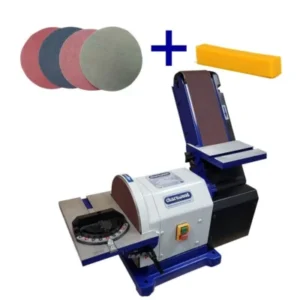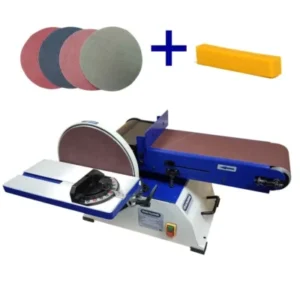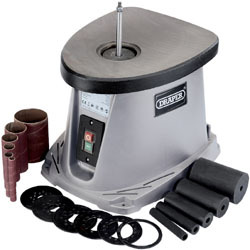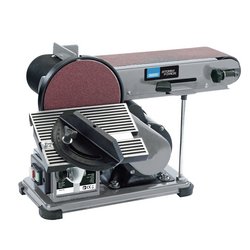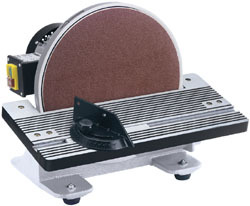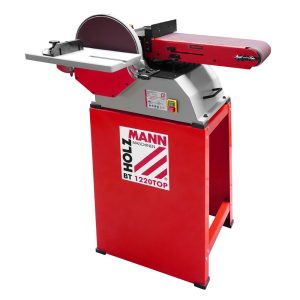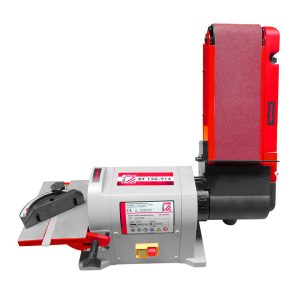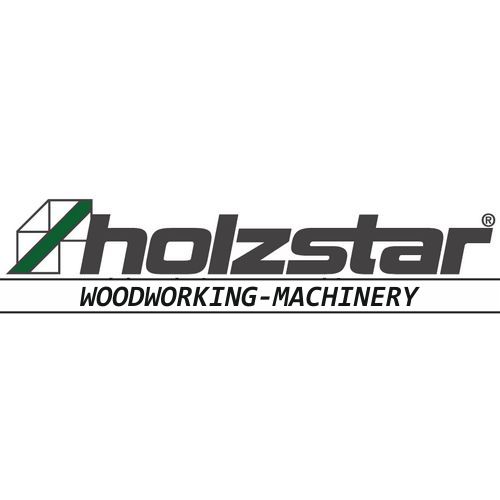Do you need to smooth surfaces?
It’s no secret that wood straight from the mill can be rough or come with dents and other marks. However, wood sanding will smooth the surface and emphasise the beauty of the wood’s natural grain.
Whether it be for cabinetry making, staircase building or toy manufacturing, the right wood sanding machine is sure to save you time and, in turn, help you to achieve a high-quality finish. But, with so many options to choose from, how do you know which to choose?
A complete range of Plunge Saws
When shopping for sanders, it helps if you know a little bit about the different types available. Here we list just a few:
- Orbital sanders – even though it’s not something we stock at Kendal Tools, orbital sanders, or palm sanders, are fantastic. They work as an all-round power tool and can be used one-handed. However, their lightweight nature makes them unsuitable for heavy removal jobs and finer details.
- Belt sanders – these sanding machines use a continuous loop of abrasive paper, also known as a sanding belt, and are used to remove material from tabletops, doors and corner sections of timber flooring quickly. They are often used with coarse-grit sanding paper, so it’s recommended that you only use them early on in the finishing process.
- Disc sanders – ideal for shaping wood rather than smoothing it, these provide a clearly defined working edge. The great thing about belt disc sanders is that they allow the user to see what they are working on and to use both hands.
Why choose a sanding machine from Kendal Tools?
As a premier supplier of woodworking machinery and sanding machines, we stock all the well-known brands, including Charnwood, Draper, Fox, Scheppach and SIP, and pride ourselves on competitive pricing. From belt disc sanding machines to wide belt sanders, and sanders fitted with dust extraction ports, you’ll be hard-pressed to find a supplier with more choice and lower prices than us.
Although it’s great to have options, we understand that too many can make it confusing and hinder your decision. That’s why we are here to guide you in choosing the best wood sanding machine for your workshop, your needs and your budget.
For example, if you need to smooth large pieces of wood, flexibility is desirable and, with this in mind, we highly suggest you opt for a wide belt sander, like the Draper BDS150. The beauty of this machine is that it comes with a 4” wide belt and a 6” disc sander – providing you with the best of both worlds.
Other belt disc sanders are available and come at various price points. So, what are you waiting for? Take a look at our extensive collection today.
Get in touch
If you have a question about our sanding machines and accessories or would like to discuss your requirements further, please don’t hesitate to give us a call on 01539 733 774 or drop us an email at info@kendaltools.co.uk, and we’ll get back to you shortly.
Showing 1–20 of 28 results
-

LED Light with Flexi-shaft and Magnetic Base
£38.35 Inc. VAT View Product -

SIP 01933 12″ / 300mm Disc sander with manual brake 230volt
£211.90 Inc. VAT View Product -

01927 SIP 6″ x 10″ Belt and Disc sander 750watt/ 1hp Motor
£369.99 Inc. VAT View Product -
Reduced Price

01927PACK SIP 6″ x 10″ Belt and Disc sander 750watt/ 1hp Motor + 01923 DUST EXTRACTOR PACKAGE DEAL.
Original price was: £495.98.£478.70Current price is: £478.70. Inc. VAT View Product -

01946 SIP 4″ x 8″ Belt / Disc Sanding Machine 500watt motor
£217.99 Inc. VAT View Product -
Reduced Price

SIP 01946PACK Sanding Belt 4″ & Disc Sander 8″ PLUS 01923 DUST EXTRACTOR PACKAGE DEAL
Original price was: £454.05.£332.45Current price is: £332.45. Inc. VAT View Product -

Holzstar BTS151 Belt and Disc Sander 100mm Wide belt x 150mm Dia. Disc 230volt
£154.99 Inc. VAT View Product -

Holzstar BTS250 PRO Belt and Disc Sander 150mm Wide belt x 250mm Dia. Disc 230volt
£599.00 Inc. VAT View Product -

Holzstar OSS100 Oscillating Sanding Machine with Assortment of Drums and Sleeves 230volt
£205.00 Inc. VAT View Product -

Holzstar ZSM 405 ECO 405x130mm Cylindrical Drum Sanding Machine 405mm Wide Belt.
£1,199.90 Inc. VAT View Product -

Package Deal; Charnwood DS10/20 Drum Sander 10″ Width & BC01 Cleaner
£725.99 Inc. VAT View Product -

Charnwood BD15 Belt & Disc Sander, 1″ wide belt x 5″ dia disc.
£89.99 Inc. VAT View Product -
Reduced Price

Package Deal; Charnwood BD46 Belt & Disc Sander, 4″ x 6″, BC01 Cleaner, VB150 & 4 x 6″ Discs
Original price was: £152.90.£135.99Current price is: £135.99. Inc. VAT View Product -
Reduced Price

Package Deal; Charnwood BD48 Belt & Disc Sander, 4″ x 8″, BC01 Cleaner, VB300 & 4 x 8″ Discs
Original price was: £235.90.£189.99Current price is: £189.99. Inc. VAT View Product -

Package Deal; Charnwood BD610 Belt & Disc Sander, 6″ x 10″, BC01 Cleaner, VB300 & 4 x 10″ Discs
£339.99 Inc. VAT View Product -

Draper BBS450A Bobbin Sander with Five Sanding Bobbins (10773)
£183.99 Inc. VAT View Product -

Draper BDS150 4″ Wide belt and 6″ Disc Sander (53005)
£177.99 Inc. VAT View Product -

Draper DS305 12″ Disc Sander with Tilting Table 750watt motor (88912)
£299.99 Inc. VAT View Product -
Reduced Price

Holzmann BT1220TOP 254x150mm Belt & Disc Sander 10″ Disc x 6″ Wide Belt
Original price was: £449.90.£419.90Current price is: £419.90. Inc. VAT View Product -

Holzmann BT150-914 100mm x 150mm Belt & Disc Sanding machine 230volt
£176.99 Inc. VAT View Product
Do I need a belt or disc sander?
Choosing the right type of sander will help ensure maximum success for all of your projects. But which is right for you? Belt sanders use a loop of abrasive sandpaper to remove excess material quickly and are ideal for flattening and levelling long sections of timber. The electric motor drives a pair of drums onto which the sandpaper is mounted. Belt sanders remove more material, much faster, so don’t leave a good finish on projects, something which should be kept in mind. Disc sanders, on the other hand, are made up of circles of abrasive paper, mounted onto a spinning circular plate. More suited for end grain work, disc sanders remove less material and are useful for shaping woods or mitre work (if your model comes with a mitre slot). Disc sanders are best suited for smaller projects rather than large projects like doors. For more information about which sander is best for you, call us or send us an email and we can talk through the best sanding machines for your recommendations.
What is a bobbin sander?
Also known as an oscillating spindle sander, a bobbin sander is useful for sanding and smoothing curved or internal surfaces, even with very intricate designs. Bobbin sanders have a flat tabletop-type structure for resting the timber on and a rotating and oscillating sanding drum that stands up through a hole in the tabletop to remove material. This oscillating and rotating sanding drum is covered with an abrasive sleeve (or sanding bobbins) and gives a consistent scratch pattern along the material, resulting in a very smooth finish. For more advice about bobbin sanders and which model is best for you, reach out to our experts at Kendal Tools & Machinery – simply call us or fill in our enquiry form, outlining your requirements, and we’ll get back to you with our recommendations.
Is a belt linisher the same as a belt sander?
The process of linishing means to polish or remove excess material from (something) by contact with an abrasive moving belt. As such, a belt linisher tends to be very similar to a belt sander in construction, with the main differences being that they remove less material per pass, can also polish, and generally run slightly slower. A belt grinder, on the other hand, tends to run faster and removes more material per pass, making trimming and levelling tasks quicker. If considering a belt sander, check out our range of duo belt and disc sander machines, giving woodworkers the best of both worlds and increasing the value per single machine. To ask any questions or for personalised recommendations, call us or send us an email and we can help find the best option for your workshop.
Do I need dust extraction during sanding?
Whether from short-term or prolonged sanding episodes, wood dust exposure can be very harmful to hobby and professional woodworkers alike. Wood processing causes small particles of wood dust to become airborne and a person’s upper respiratory system can filter out the larger particles. Smaller particles, however, can go deep into the lungs causing damage and scarring to the lung tissue. Each time this happens, a small amount of irreversible damage occurs, reducing the worker’s lungs’ ability to take in oxygen. Over time, can make it increasingly difficult to breathe – making woodworkers four times more likely to develop respiratory conditions, such as asthma, according to the HSE. Pairing your sander with a dust extractor is an essential way to protect your health and can also have surprising additional benefits, including. • Keeping your view unobstructed – clearly seeing what you are doing is much easier, saving what can be costly mistakes and making your job easier. • Helping you work more efficiently – a residue-free sander can run more efficiently, prevents overheating, and keeps it in the best condition. • Less time spent on cleaning up – a win-win for everyone. • Keep customers happy – if working in residential or commercial properties, using a sander with a dust extractor causes much less of an impact on their premises. If you are looking for sanders with in-built dust extraction, Kendal Tools & Machinery can help. Simply call us or fill in our enquiry form, outlining your requirements, and we’ll get back to you as soon as we can.

